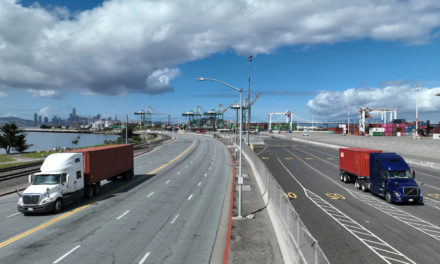
Employment in the transportation sector increased in June, owing primarily to strong gains in three subsectors, notably trucking.
After losing over 3,000 jobs in May, trucking employment increased by more than 6,000. This is the greatest rise this year and the largest since November when trucking jobs increased by over 12,000 people. In May, preliminary data indicated a 1,500-job loss. According to revised figures, the number of jobs added in April increased by 1,800, after previously reporting a 600-job rise.
The June and May employment figures are preliminary.
In 2020, the transportation subsector lost 42,500 jobs. This is by no means the largest annual reduction. More than 100,000 trucking jobs were lost in 2009, following a 76,500 job loss in 2008 during the Great Recession. Trucking jobs declined by more than 49,000 in 2001, another recession year.
Trucking employment has increased by over 8,000 jobs since the end of 2020. Last year at this time, the trucking subsector had its largest monthly loss since tracking began in 1990 due to the pandemic, resulting in a loss of approximately 90,000 jobs. The epidemic hit worst in April 2020 due to new stay-at-home orders across the country, leading businesses to close or change operations.
The resulting job losses in transportation eliminated more than five years of employment gain in the industry. However, May 2020 marked the beginning of a nine-month rising streak. Prior to the pandemic, the most recent time trucking employment was at its current level was in May 2018. Last April, those figures fell to levels last seen in the fall of 2014.
In its analysis of the employment report, online freight network According to Convoy, while June was a good month, hiring may be difficult in the future.
To start, no significant gain in employment has occurred in states that have discontinued supplementary unemployment benefits created during the pandemic. Some speculated that the increased salary discourages people from looking for work. Labor-force participation among those 55 and older is actually down compared to this time last year, resulting in almost 500,000 fewer workers.
Despite tales of truckers getting paid a lot of money, Convoy points out that the statistics shows a different narrative. According to the research, hourly salary increases for frontline transportation workers “barely kept pace with core inflation in the first half of 2021.”

According to the Bureau of Labor Statistics, the transportation sector added roughly 11,000 jobs. According to last month’s statistics, employment in the sector increased by 23,000 positions. According to updated figures, that number is currently close to 20,000.
Except for three transportation subsectors, all but one witnessed job growth, with warehousing/storage gaining the most (13,200), followed by air transport (7,800 additional jobs) and trucking.
Those improvements, however, were countered by a significant loss of approximately 24,000 employees in the couriers/messengers subsector. Water transportation and transit/ground passenger transportation both lost 100 jobs.
Last year, over 93,000 jobs were lost in the transportation sector. The transportation sector as a whole had worse years in 2009 (minus 273,800), 2008 (minus 153,800), and 2001 (minus 153,800). (minus 235,700). The transportation industry has added more than 61,000 jobs so far this year. Because of the pandemic, transportation jobs were down by more than 425,000 at this time last year.
The average hourly wage in the transportation and warehousing sector was $26.75 in June, up 47 cents from the previous month. Earnings increased by $1.57 from June 2020, following a drop in salaries the previous year due to an increase in the unemployment rate. Hourly wages for production/nonsupervisory positions climbed by 12 cents to $23.74 and by $1.10 year on year. The average hourly wage for private, nonfarm payrolls across all industries was $30.40, up 10 cents from the previous month.
The unemployment rate for transportation and material-moving occupations fell to 8.6 percent in June from 8.9 percent in May. Due to the epidemic, the unemployment rate in the transportation sector was approximately 15% at this time last year.
Overall unemployment remained relatively stable at 5.9 percent in June, despite the economy adding 850,000 jobs. The unemployment rate is still 2.4 percentage points higher than it was in February of last year, shortly before the adoption of stay-at-home directives. However, unemployment has dropped by nearly 9 percentage points since April of last year.










